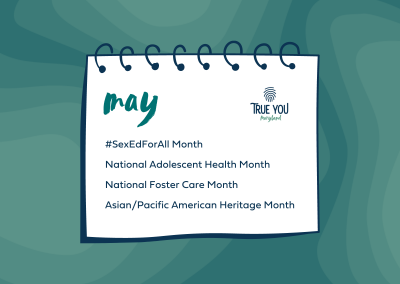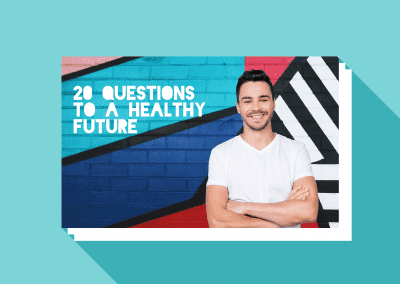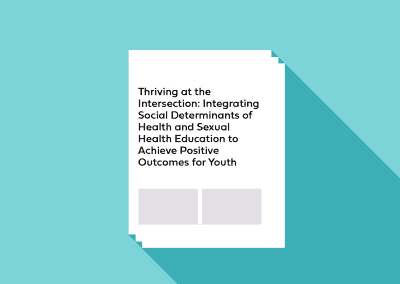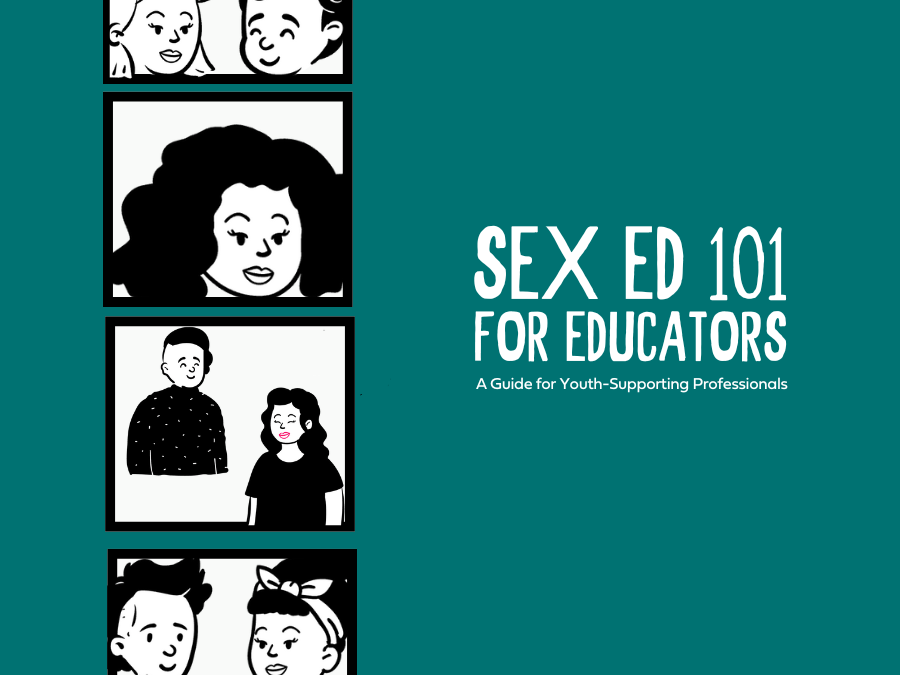
Sex Ed 101 for Educators
2024
*Updated from The Teacher’s Guide to Sex Ed (2018)
Whether you’re a teacher, health educator, sex educator, peer educator, program facilitator, or any other kind of youth-supporting professional providing sex ed programming for young people, this elearning is for you!
Providing quality sex ed is more than just anatomy and pregnancy. But how do you focus on all the stuff that matters to help young people make informed and healthy choices? How do you explain consent, or what LGBTQ+ means? How do you help young people feel more comfortable? How much should you share about your personal life? How does birth control work? For all these important questions and more, we’ve got you covered with these short, practical elearning lessons.
Sex Ed 101 for Educators has 14 lessons to cover the basics of what you need to know. Go through all 14, or pick and choose what works best for you. Review the units in any order, at your own pace. With each lesson, we identify the Professional Learning Standards for Sex Education topics and indicators addressed, so you can get the professional development you need to continue to build your sex ed facilitation skills.
Looking for The Teacher’s Guide to Sex Ed? You’re in the right place. We developed The Teacher’s Guide in 2018, so it was definitely time for a refresh. Get the same content, now updated, and more with Sex Ed 101 for Educators!
Contributing Staff

Should I share my personal opinions?
Teaching sex ed often means getting asked for opinions, and these opinions are linked to our values. Some values should be shared, and others should be kept private. The trick is to figure out which is which because your role as an educator is to reinforce universal values and avoid sharing your personal values.
Professional Learning Standards for Sex Ed
A safe learning environment allows students to explore and articulate their beliefs, values, and experiences relevant to sex education. To create such an environment, educators need to examine their own personal values, understand their conscious and unconscious biases, and set personal boundaries around their self-disclosure.
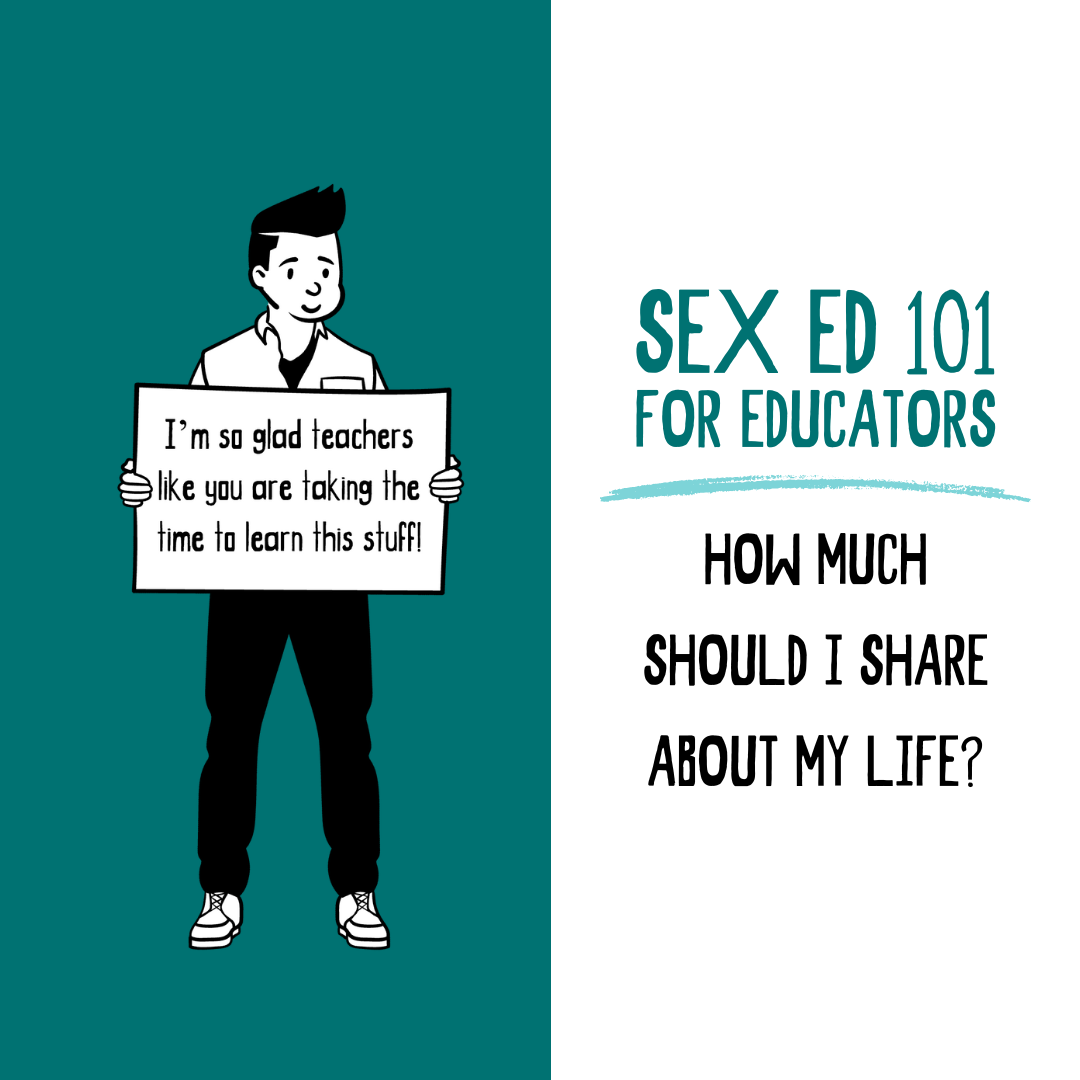
How much should I share about my personal life?
It is natural to want to build rapport with the young people we teach. In fact, it is recommended! One common tool we use when building trust with another person is to share stories about our personal experiences. This sharing is called disclosure.
Disclosure is key to building friendships, familial relationships, or romantic relationships, but too much disclosure can be harmful when working with young people in a professional manner. Explore examples and learn more about what’s OK and not OK to share.
Professional Learning Standards for Sex Ed
A safe learning environment allows students to explore and articulate their beliefs, values, and experiences relevant to sex education. To create such an environment, educators need to examine their own personal values, understand their conscious and unconscious biases, and set personal boundaries around their self-disclosure.
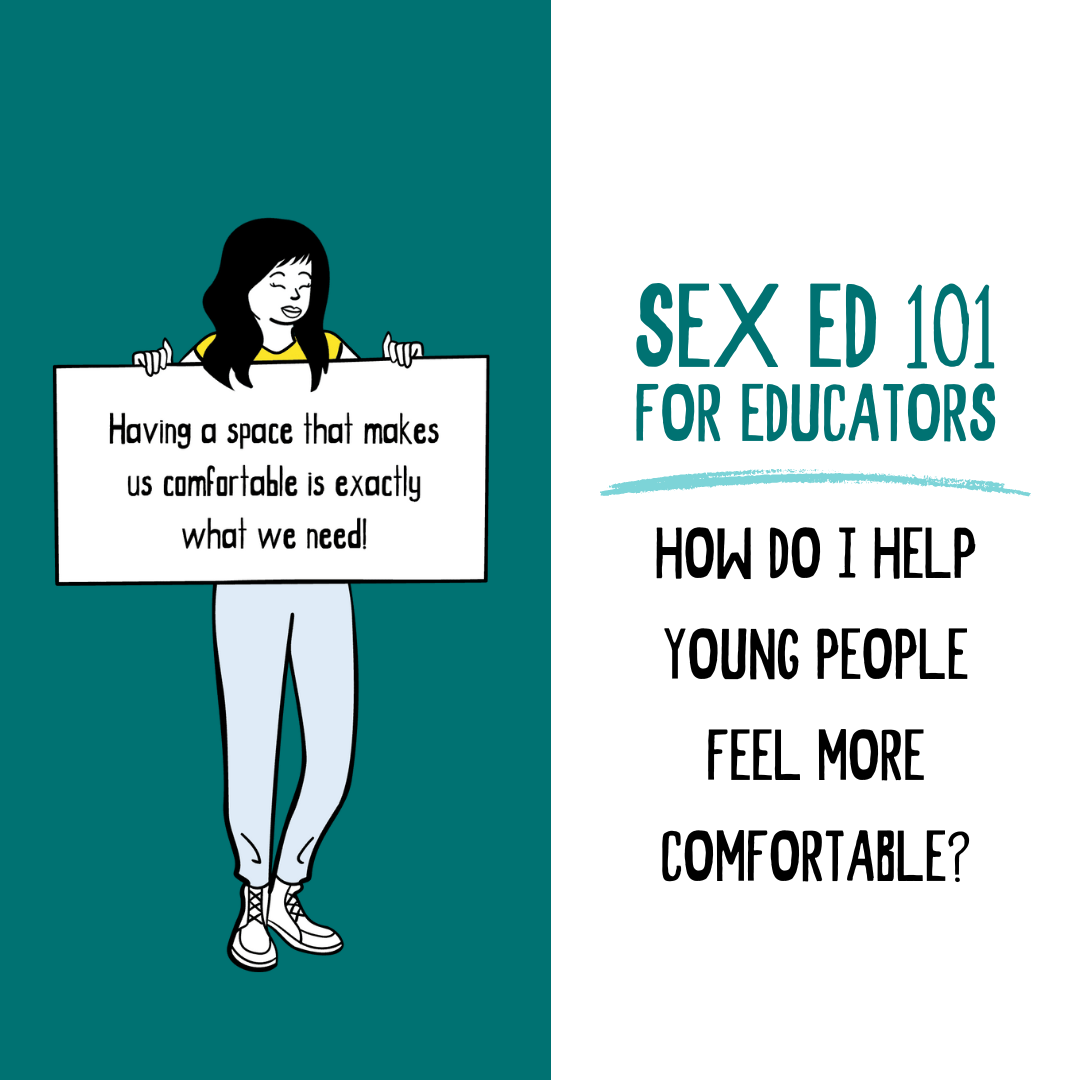
How do I help young people feel more comfortable?
Let’s talk about practices that can help set the tone and make young people feel more comfortable participating! Learn strategies to build an inclusive and affirming environment. Explore how to balance humor and appropriate boundaries. Get tips on how to model good communication and reinforce boundaries and group agreements to help all young people in your class or program feel comfortable.
Professional Learning Standards for Sex Ed
Being familiar with the best practices in the field of sex education can help educators handle potentially sensitive topics, foster an engaging learning environment, choose the most effective teaching strategies for each group, and answer even the most challenging questions.
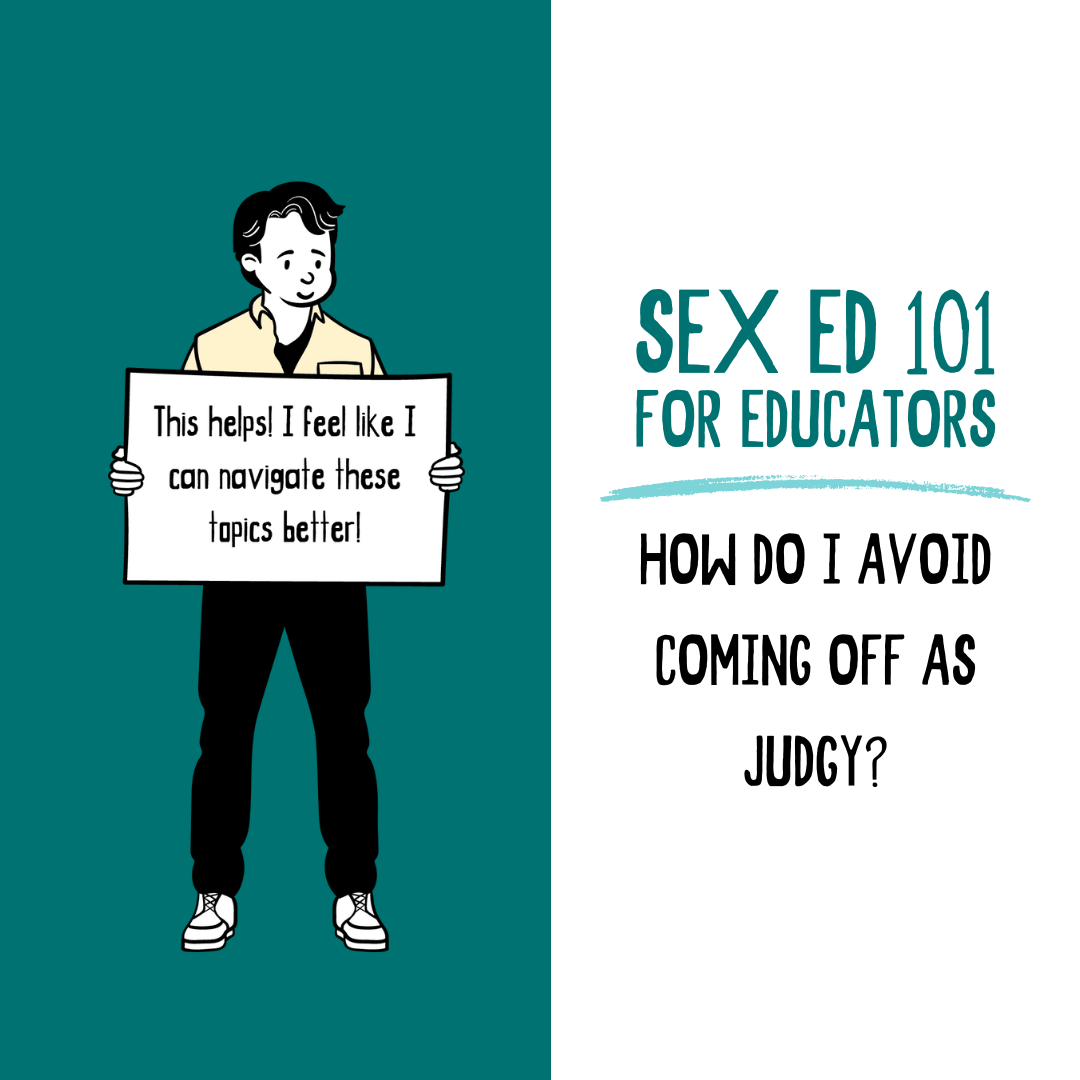
How do I avoid coming off as judgy?
Typically, when facilitators (or adults in general) use language that carries judgment or makes assumptions, they aren’t doing it to be mean. Often, it’s because they want to protect young people from hard situations and difficult choices. And that desire is a good thing! Get tips on using affirming, non-judgmental framing. Learn how to use neutral language that prioritizes getting consistent and factual information to young people.
Professional Learning Standards for Sex Ed
Being familiar with the best practices in the field of sex education can help educators handle potentially sensitive topics, foster an engaging learning environment, choose the most effective teaching strategies for each group, and answer even the most challenging questions.
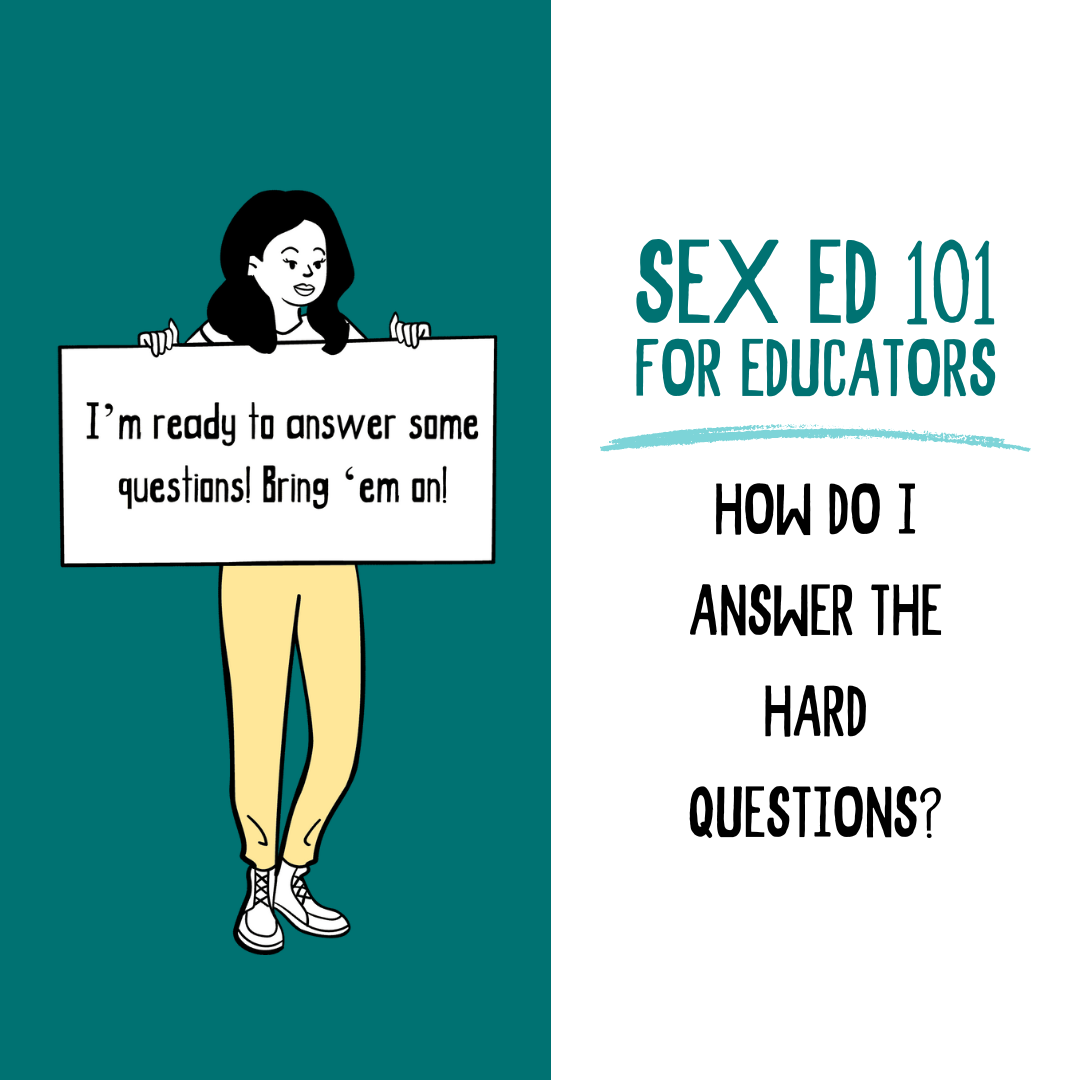
How do I answer the hard questions?
Get tips and practice answering hard questions. Learn how to clarify what is being asked, affirm the young person for asking, determine the type of question, answer the question or commit to finding the answer, and check for understanding. With practice, you’ll be more able to respond in the moment when you get a challenging question.
Professional Learning Standards for Sex Ed
Being familiar with the best practices in the field of sex education can help educators handle potentially sensitive topics, foster an engaging learning environment, choose the most effective teaching strategies for each group, and answer even the most challenging questions.
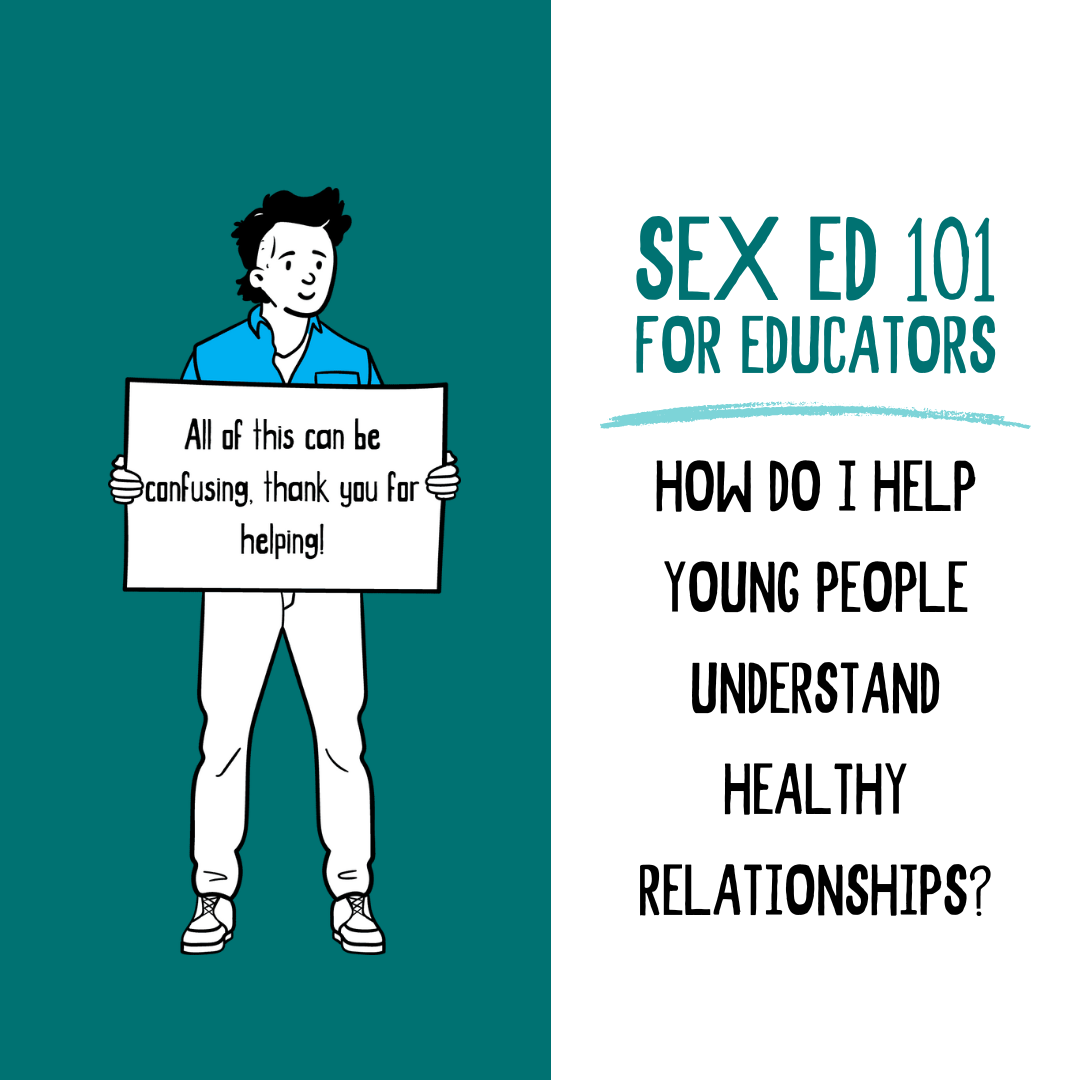
How do I help young people understand healthy relationships?
Healthy relationships, whether they are romantic, sexual, friendship, familial, or otherwise, can look many ways depending on what makes the people in them feel cared for and supported. Dig into the characteristics of healthy relationships to learn more about how we can talk to young people healthy relationships. As a sex educator, your job is not to necessarily tell them what’s right and wrong in relationships. Your job is to uphold universal values (e.g., dignity, respect, equality, safety, etc.) and probe learners to think critically about whether certain values, behaviors, and situations are healthy. Practice using open-ended questions and interactive strategies to encourage their thinking.
Professional Learning Standards for Sex Ed
Knowing the facts about all the topics covered in sex education is an essential part of being an effective teacher. Educators must have extensive and current knowledge of the core content found in the National Sex Education Standards.
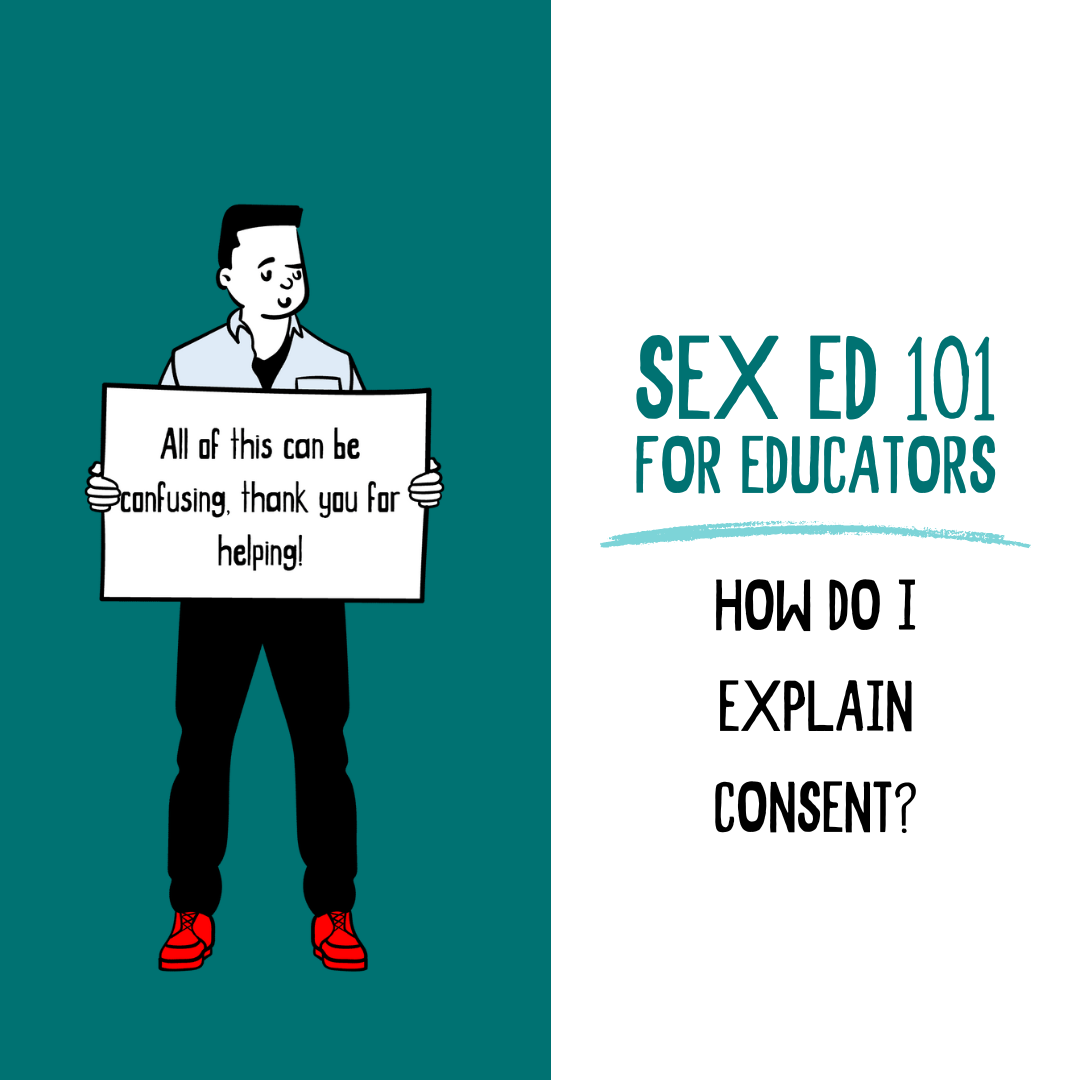
How do I explain consent?
Consent is giving and receiving permission to be sexual with someone—free of force, deception, and coercion. Consent will be a theme throughout any sex education program, so it’s important to get comfortable identifying where and how issues related to setting boundaries, communicating personal limits, and consent come up. Learn how to talk about what consent is and isn’t, and what it looks like in practice.
Professional Learning Standards for Sex Ed
Knowing the facts about all the topics covered in sex education is an essential part of being an effective teacher. Educators must have extensive and current knowledge of the core content found in the National Sex Education Standards.
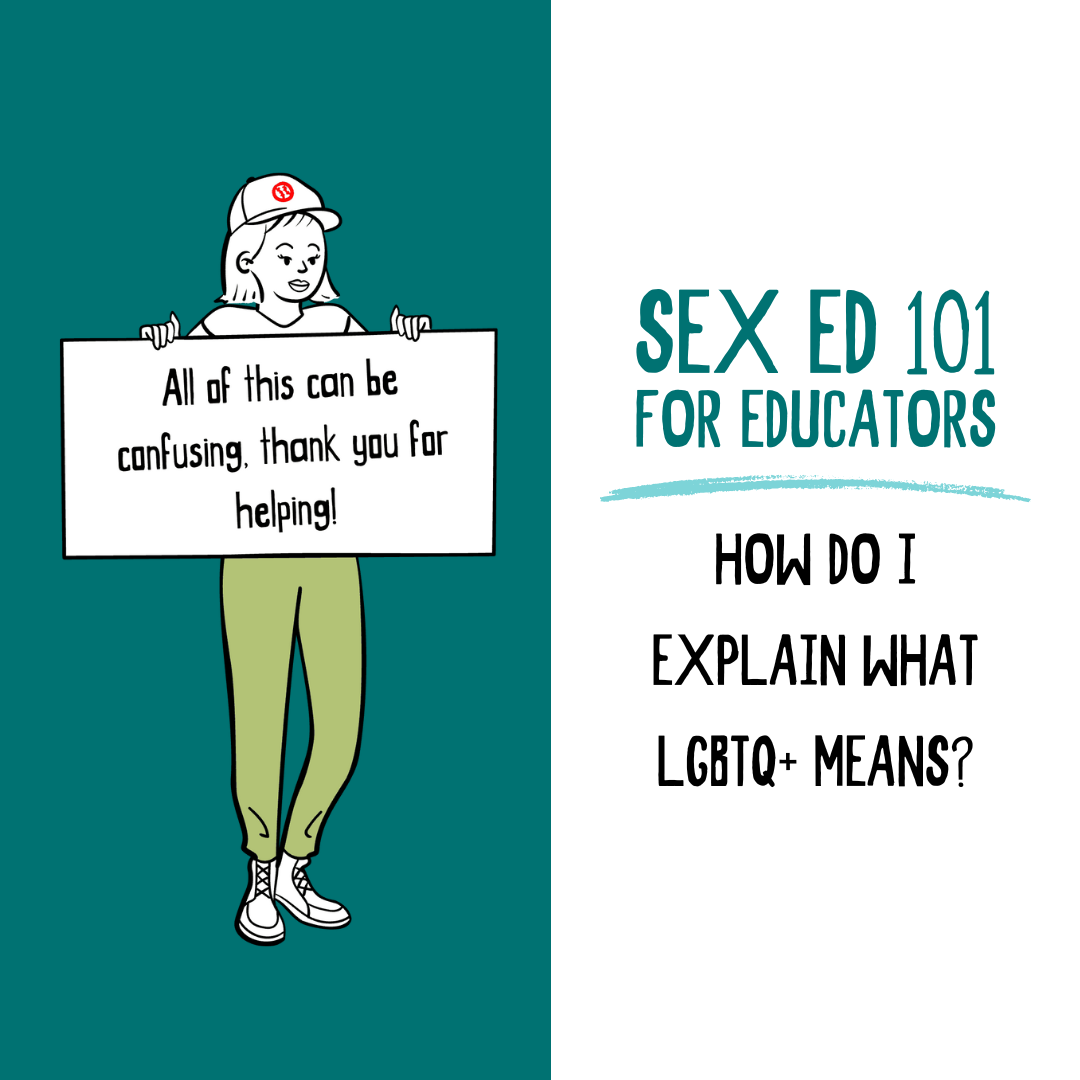
How do I explain what LGBTQ+ means?
Sexual identity is typically a combination of someone’s: sex, gender identity, gender expression, sexual orientation, and sexual behavior. When packaged together, we get a sense of our sexual selves—our identity. All people have a sexual identity. Sexual identity will be a constant theme in any sex ed class, from talking about who will use protection to who flirts with whom to how people have relationships. Human sexuality broadly does not fit into a binary (this/that). Across all of these concepts, young people need to hear that a spectrum of experiences and identities is normal. Get comfortable using neutral language and affirming that there is a whole universe of normal ways to grow into adulthood. Learn more about and practice using inclusive language to relay that there is a spectrum of human experiences that are all acceptable and good, or “normal.”
Professional Learning Standards for Sex Ed
Knowing the facts about all the topics covered in sex education is an essential part of being an effective teacher. Educators must have extensive and current knowledge of the core content found in the National Sex Education Standards.
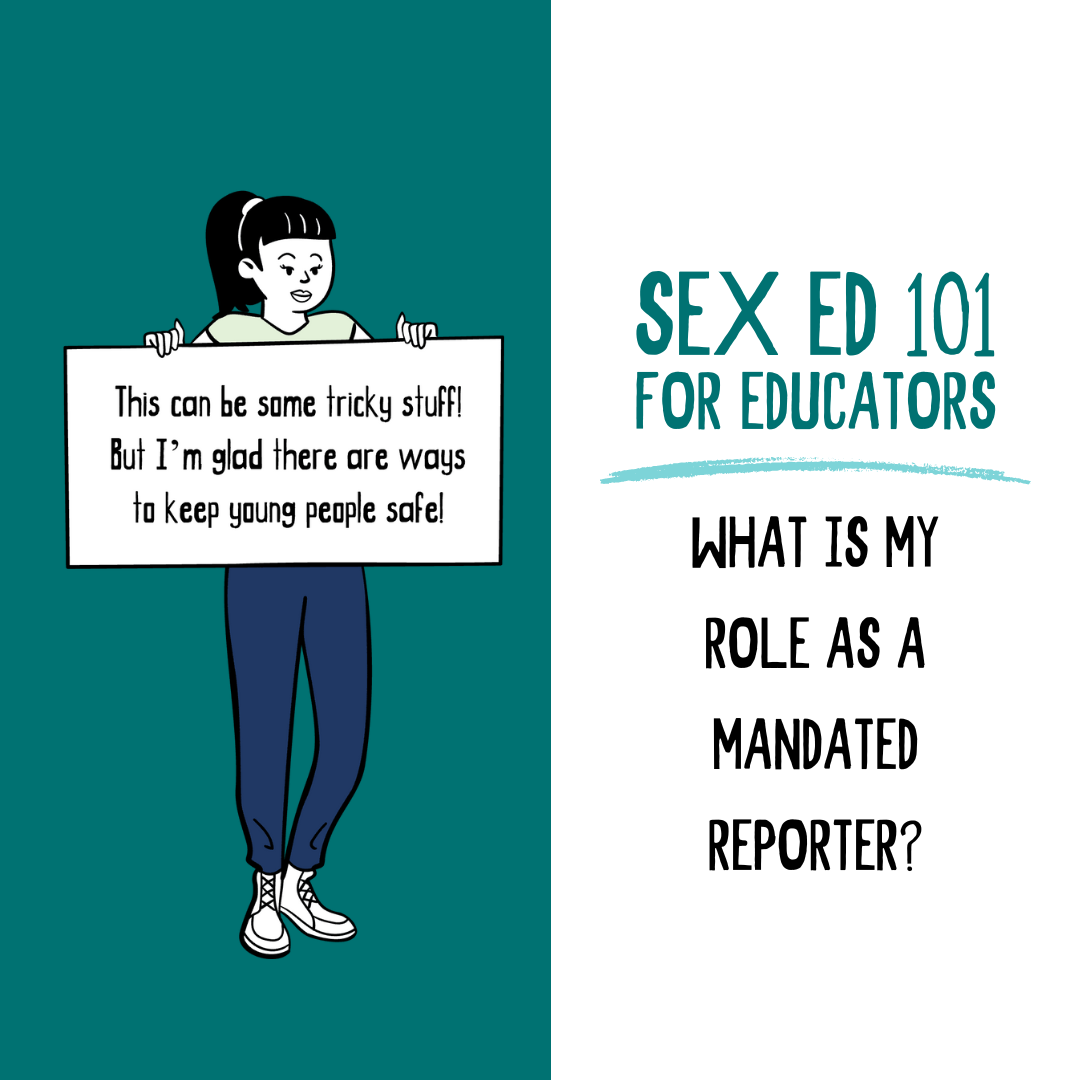
What is my role as a mandated reporter?
Mandated reporters are people who have an individual duty to report known or suspected abuse or neglect relating to children, elders, or dependent adults. Learn about who is required to report, how to handle disclosures, and how to minimize stress and trauma for young people.
Professional Learning Standards for Sex Ed
A safe learning environment allows students to explore and articulate their beliefs, values, and experiences relevant to sex education. To create such an environment, educators need to examine their own personal values, understand their conscious and unconscious biases, and set personal boundaries around their self-disclosure.
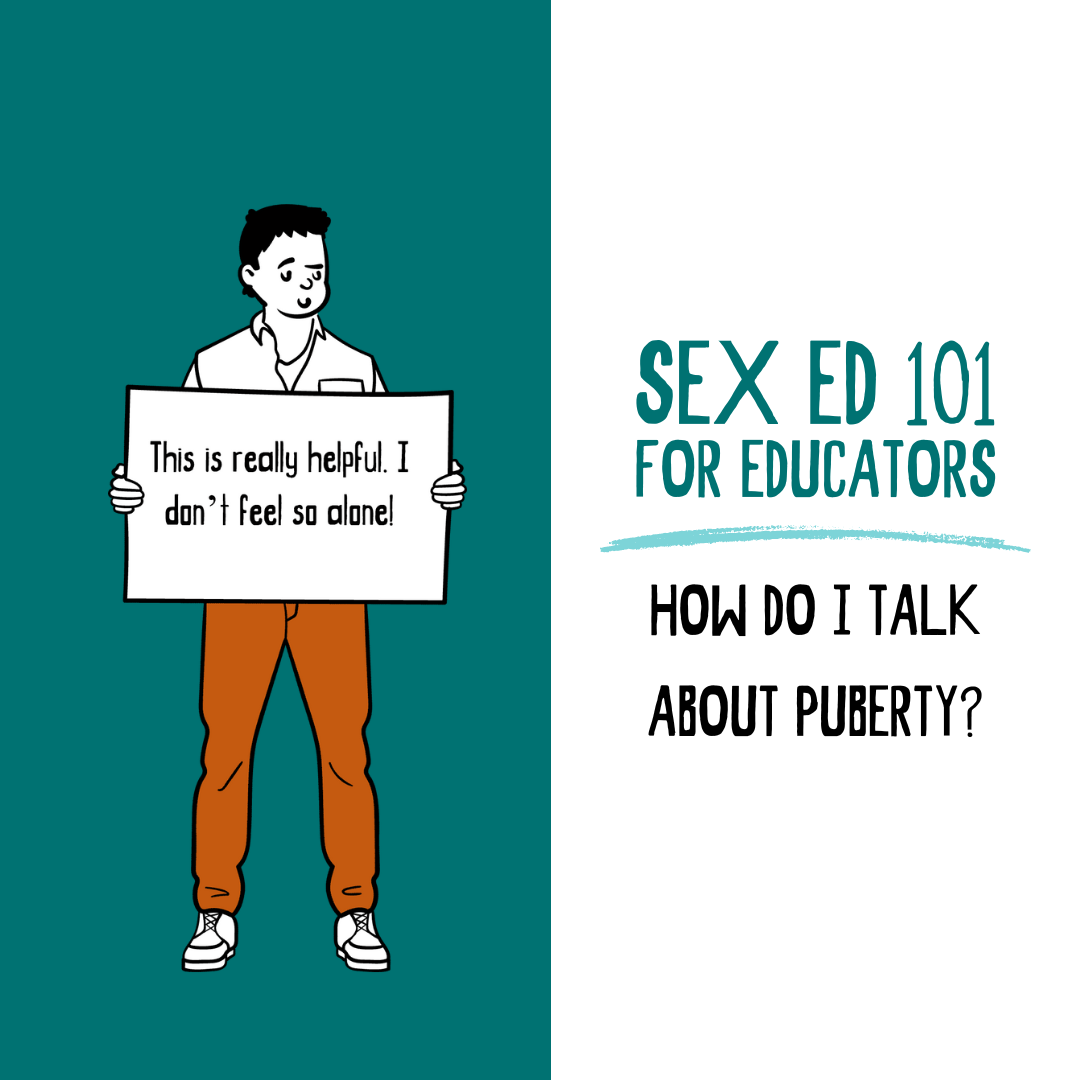
How do I talk about puberty?
While going through puberty can be tricky, with a little more information about what is happening and how to handle it, hopefully, young people can feel more at ease. Young people need to know that they can expect important changes to their bodies, brains, emotions, and even socially. Young people usually start going through puberty between ages 8 and 14, but this is not the case for everyone. Puberty also doesn’t happen all at once—it comes in stages and takes many years. Bodies are unique, and everyone goes through puberty at their own pace.
Professional Learning Standards for Sex Ed
Knowing the facts about all the topics covered in sex education is an essential part of being an effective teacher. Educators must have extensive and current knowledge of the core content found in the National Sex Education Standards.
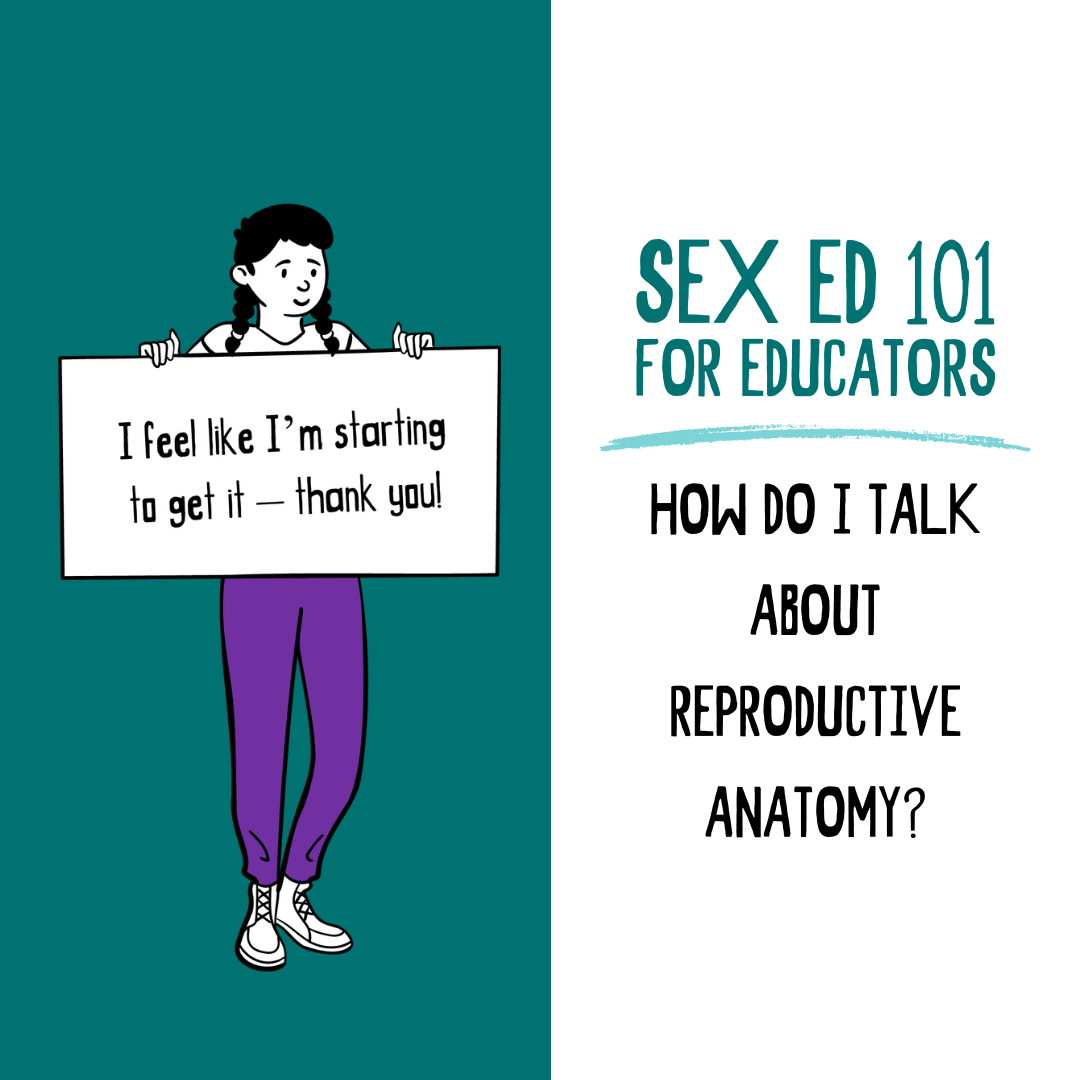
How do I talk about reproductive anatomy?
Review the basics of sexual and reproductive anatomy for people with a penis and people with a uterus. Get practice answering questions and using plain language, so you can help young people understand how their bodies work. Practice using inclusive and affirming language and talking about body parts in ways that acknowledge that they may have sexual or purely practical purposes (not focused on reproduction). Learn how to share concise, accurate information in plain language.
Professional Learning Standards for Sex Ed
Knowing the facts about all the topics covered in sex education is an essential part of being an effective teacher. Educators must have extensive and current knowledge of the core content found in the National Sex Education Standards.

How does birth control work?
Learn more about how different kinds of birth control work. Get tips on how to stick to the facts and universal values because everyone deserves access to accurate information and to make the right decisions for themselves. There’s a lot to know when it comes to medical stuff, like birth control and how the reproductive system works. It’s a matter of practicing, learning, and being patient with yourself.
Professional Learning Standards for Sex Ed
Knowing the facts about all the topics covered in sex education is an essential part of being an effective teacher. Educators must have extensive and current knowledge of the core content found in the National Sex Education Standards.
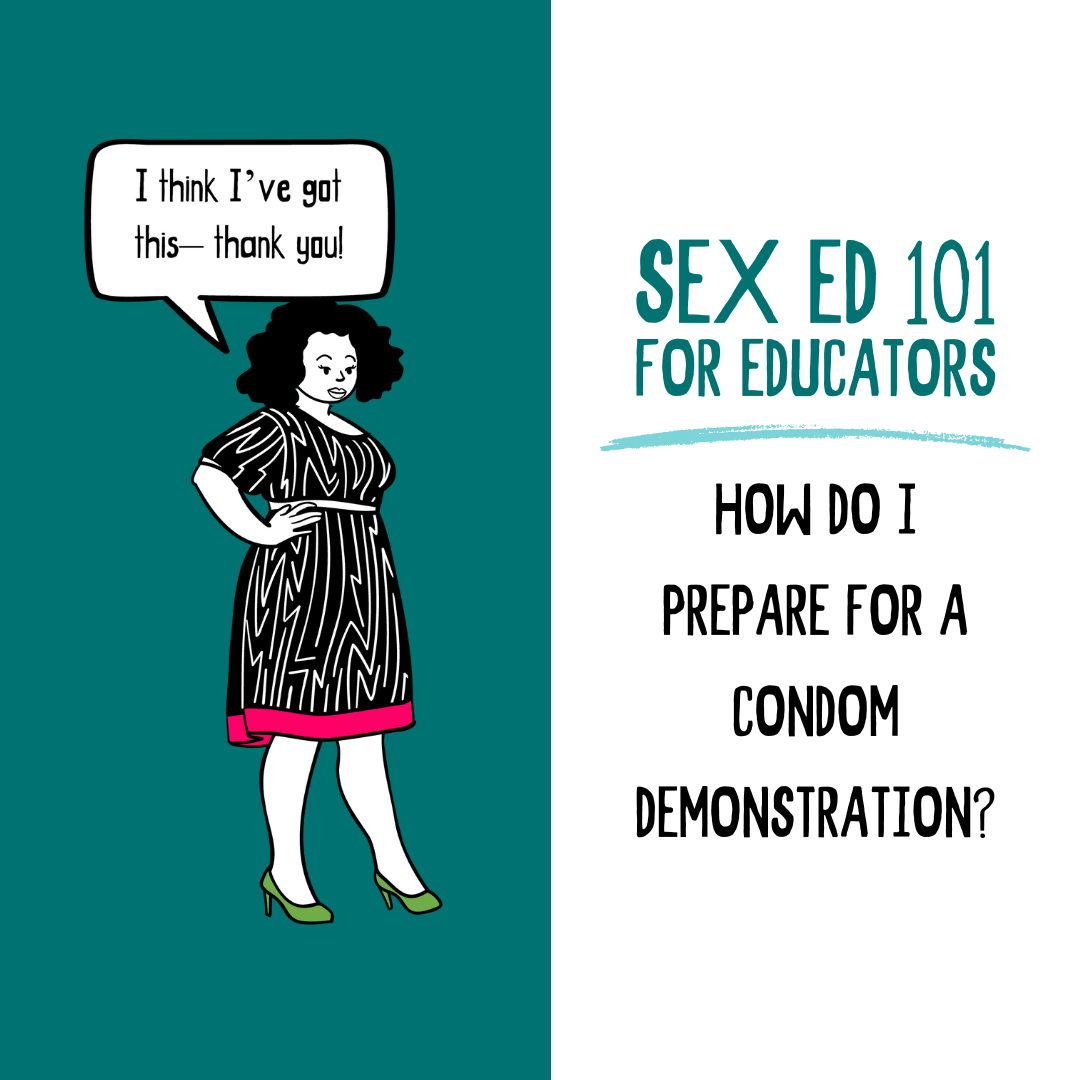
How do I prepare for a condom demonstration?
Condom demonstrations are important because it’s better for young people to see (and then practice!) applying a condom before they need to use it. Review condom use steps for internal and external condoms. Get the tips you need, so you can feel comfortable doing condom demonstrations for your students. When it comes to condom use, there is a correct way to use them. You’ll learn how to focus on equipping young people with the DO’s of condom use, so they can use them effectively, every time.
Professional Learning Standards for Sex Ed
Knowing the facts about all the topics covered in sex education is an essential part of being an effective teacher. Educators must have extensive and current knowledge of the core content found in the National Sex Education Standards.
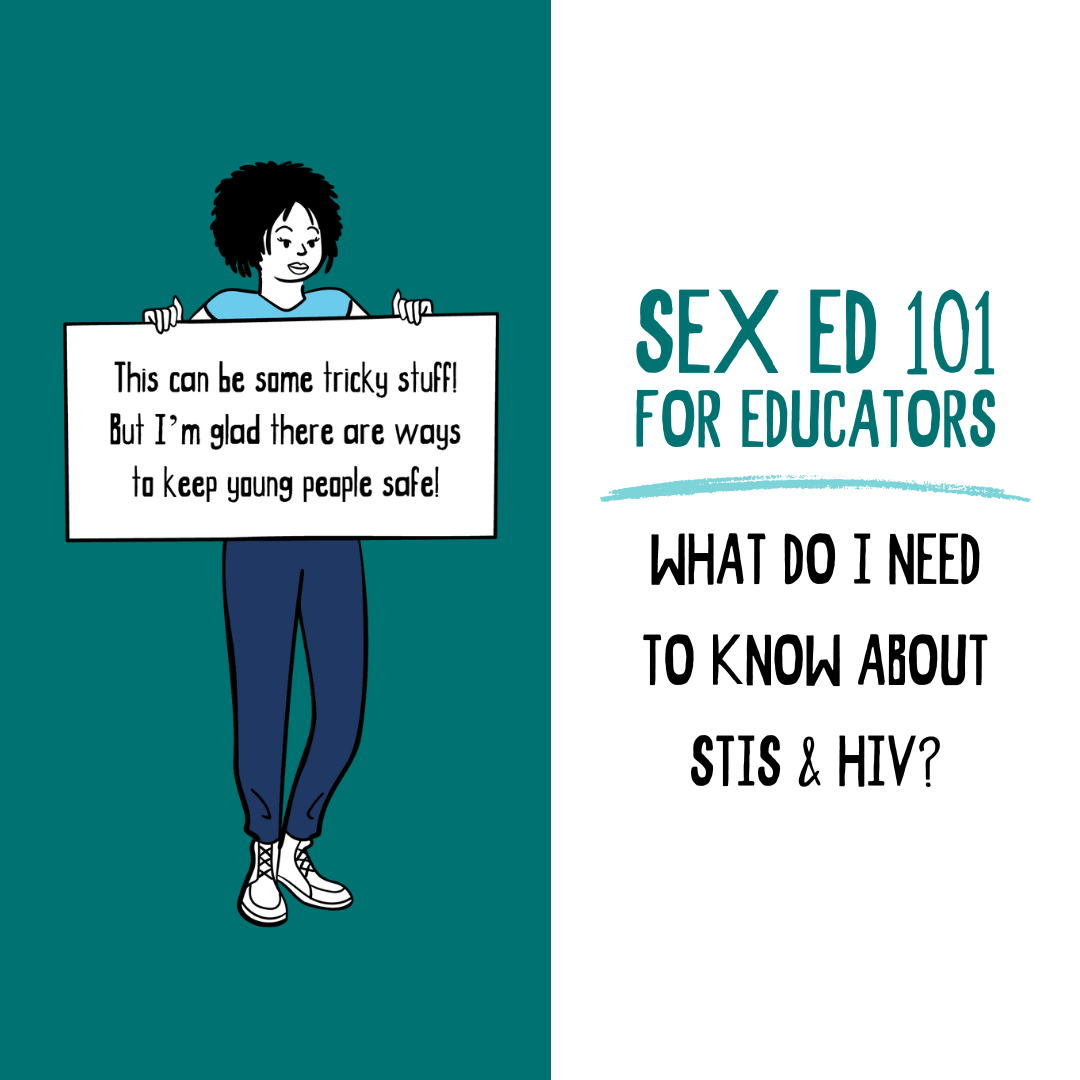
What do I need to know about STIs and HIV?
Review the key points on STIs, including HIV, to share with young people. Focus on how to avoid getting STIs, common symptoms of STIs, and why testing is important. Get tips on how to answer common questions and how to help young people feel more prepared to get testing and treatment for STIs.
Professional Learning Standards for Sex Ed
Knowing the facts about all the topics covered in sex education is an essential part of being an effective teacher. Educators must have extensive and current knowledge of the core content found in the National Sex Education Standards.




